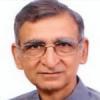This July (2017) a large procession of dalits was arrested while they were taking out the Azadi Kooch under the banner of Rashtriya dalit Adhikar Manch (National Forum for Dalit Rights). The march was to commemorate one year of Una flogging on the issue of Holy Cow. Since then young leader Jignesh Mevani with others has been trying to organize the oppressed people under Dalit Atyachar Ladhat Samiti (Committee to fight against atrocities against Dalits), with the slogan “Give us land-you keep Cow’s Tale”. They had first refused to dispose of dead cattle. Many a carcass was put in front of collector’s offices. The demand emerged from the movement that they want land for their dignified survival.

As such this movement comes as a big landmark of the depressed castes for their dignified survival. While the condition of dalits had been partly improving after independence, the betterment has been taking place at the snail’s pace. There are various obstacles to this process of transition, the failure of dalit leadership being the major one. During last few years we have seen the rise of atrocities against dalits, with the Government in power that aims at Hindu nation. At places, upper caste has become more assertive as seen in the Saharanpur violence. Here the upper caste Thakurs stopped the installation of Ambedkar statue, leading to oppression of this group, who in turn said that they will convert to Buddhism.
While manual scavenging persists, condition of workers involved in cleaning continues to stagnate or worsen, the Swatchta Abhiyan (Cleanliness Campaign) comes more as a photo op opportunity rather than the real effort to address deeper causes of lack of cleanliness, for which apart from poverty, the caste culture, where a section of community is supposed to take care of cleaning, is the major factor. With the present Government coming to power the suppression of dalit aspirations is hitting the roof. The incidents of banning Periyar Study Circle in IIT Madras and the institutional murder of Rohith Vemula are just the reflections of the state response to the efforts of dalits for enhancement of their social and economic conditions.
It is in this backdrop that the issue of cow-beef has been whipped up to create social divisions for consolidation of the sectarian politics. While the Muslims are the overt and obvious victims of this campaign, dalits and large section of poor farmers have also suffered a lot. The incident of Una may be a tip of the iceberg. It is this incident which brought to fore the latent discontent of dalits to an overt and strong fashion. As such after Rohith Vemula’s death, the discontent started building up overtly. The traditional dalit leadership did not have time to take up the issue. It was around Rohith Vemula issue that raising the issues of caste oppression was labeled as ‘anti national’. Now the newer and young leadership has come forward and is asserting to build and lead this campaign into a higher level of resistance against the age old caste system.
Jotirao Phule and Ambedkar were the pioneers of the movement which strove for equality at social and political level. Equality got enshrined into Indian Constitution. The reservations did give a lift for these communities, but that has not been a panacea. With the rise of Indian state, public education system and public sector enterprises, dalits benefitted a lot and did come to a level where the march towards equal society found its base. From the decade of 1980s the efforts are on to undermine this process by bringing to fore the issues related to identity, like Ram Temple, Holy Cow, Ghar Wapasi, love Jihad and so on. The implementation of Mandal Commission was also seen as a big challenge to caste structure and in response the Ram Temple movement was brought up with bigger intensity. In the din of such issues the core issues of social transformation have been shifted to the margins of society.
The efforts of Hindu nationalist politics have boosted the identity politics. They have also co-opted the likes of Udit Raj, Ram Vilas Paswan and Ramdas Athwaley. Those who were looked up to lead got lured to the power and have cultivated convenient arguments to cozy up Hindu Nationalism. To add to this tribe of dalit leadership, now Ramnath Kovind, a RSS trained dalit has been made the President of India! Due to the clever process of social engineering; a large section of dalits have been mobilized to become the part of rightwing campaigns, to the extent of being the foot soldiers of Hindu nationalism. At the same time the dalit icons have been manipulated to give them a right wing tilt.
At social level organizations like Samajik Samrasta Manch have played the role of promoting liaison between castes. Here the explanation of caste is manipulated to show that caste inequality is due to Muslim invaders. This type of understanding totally negates Ambedkar’s ideology. As per Ambedkar the caste system is due to the Hindu scriptures, which have been here much before the Muslims came in. In Ambedkar’s scheme of things caste annihilation is the core around which dalits politics should revolve. So today on one side Ambedkar’s annihilation of caste, goal of Samta (Equality) is being sidetracked by the Hindutva ideology’s Samrasta (Social Liaison). This has been the trajectory of dalit movement, where the quest of dalits politics for equality has been cleverly bypassed.
The newer campaigns and movements, post murder of Rohith Vemula and post Una hold a big promise for bringing back dalit politics on the rails, these movements are picking up the threads of Phule-Ambedkar scheme of things to work towards annihilation of caste. In this newer mode of campaign, the movement is not just aspiring for identity issues and age old Reservations but is trying to articulate the material aspiration of dalits in the form of land rights and related issues, something which has been forgotten for last quite some time.







Comments
Add new comment